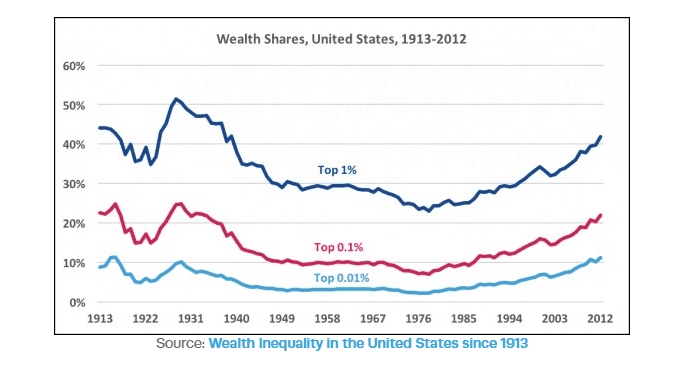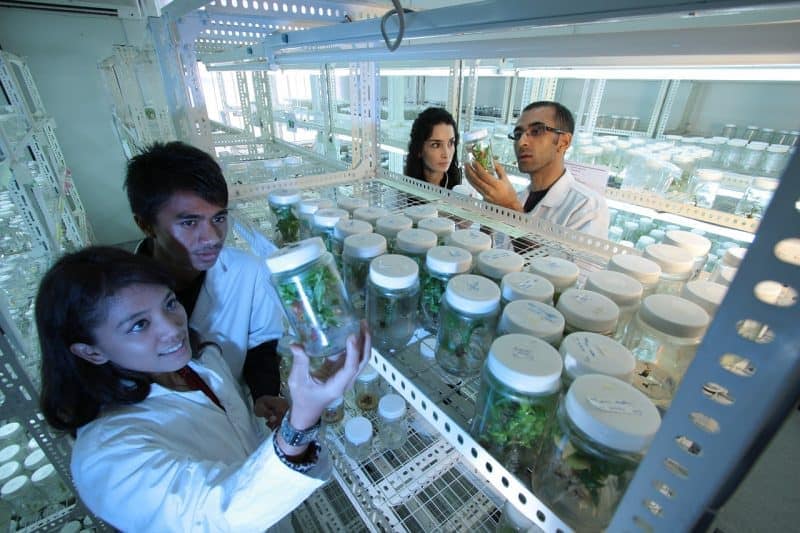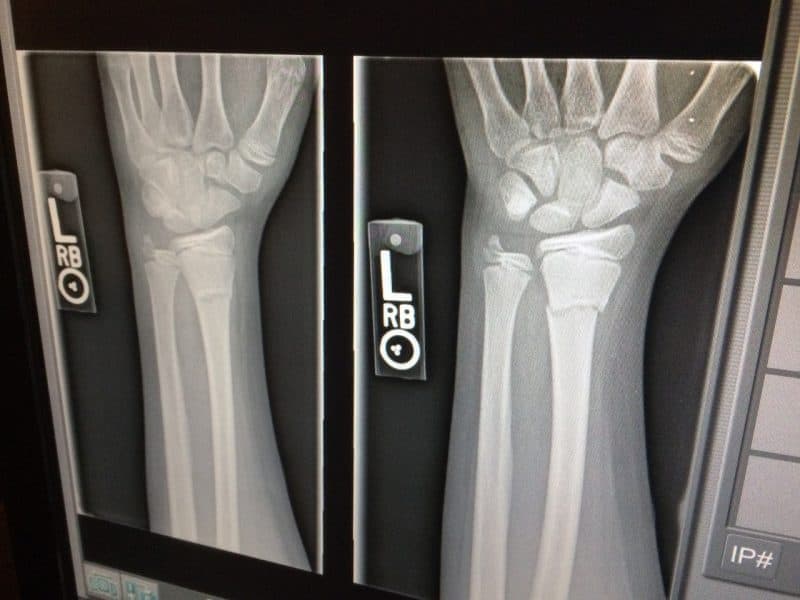
 Whether or not you think you are creative, it’s a characteristic you likely draw on from time to time. Maybe it’s not necessarily something you were born with, rather than born into, but it can be cultivated, it can be a great asset to product design teams, and there are three distinct ways to bring it about.
Whether or not you think you are creative, it’s a characteristic you likely draw on from time to time. Maybe it’s not necessarily something you were born with, rather than born into, but it can be cultivated, it can be a great asset to product design teams, and there are three distinct ways to bring it about.
But first, what is it?
We’ve all heard sayings on creativity and invention. While possibly true, they are not necessarily helpful:
For most people and at first glance, creativity is something that is desirable and an indication of future prosperity. We, who live in the United States, like to think that our country has an advantage over our competition in the world in this area of creativity though we’re not exactly sure why. Most of us have observed that creativity is affected by circumstance in that there are certain periods in history when the creative exercise is more active or productive than in other times and we often see this on a personal level, too, without knowing why.
At the outset of any discussion on creativity, we have to acknowledge that creativity isn’t always “good.” There are, for example, creative ways to appropriate other people’s wealth and assets. These methods may be entirely legal, but they also create very little if any “new” wealth and, typically, are limited to redistributing existing wealth (usually from many pockets to a few, but not always).
 This sort of creativity is beyond the scope of this discussion, and leaves us to conclude that more ideal forms of creativity, the ones we are interested in, result in improvements to the standard of living for those individuals, families, and communities who are directly affected by the creative exercise.
This sort of creativity is beyond the scope of this discussion, and leaves us to conclude that more ideal forms of creativity, the ones we are interested in, result in improvements to the standard of living for those individuals, families, and communities who are directly affected by the creative exercise.
Our measurement, then, is positive when “new” wealth is created AND the sum total effect of the creative exercise is positive. Note that this scheme of measurement also tries to address the potential for the moral conflict that may result from the creative exercise.
The reason this preceding paragraph is included is to dispel the notion that the value of the creative exercise can be proved by the wealth resulting from it. The value and supply of money is almost as arbitrary a measurement as, let’s say, a poll on how people “feel” about their station in life. Therefore, the only measurement that seems useful to measure creativity is the distribution of wealth in the Culture, which, in “good” times, shows the least amount of disparity between affluent and average families.
We should mention that this distribution of wealth seems to be entirely unaffected by the methods used in the tax code to “unnaturally” redistribute wealth. It is also interesting to note that a popular (or broad) application of creativity seems to create a downward trend in the “wealth ratio” of affluent to average families while the upward trend in this affluence “ratio” signals that popular creativity is diminishing in the Culture and fewer people are involved in the creative exercise.
It is also interesting to note, looking at the trends in the chart below, that the first PCs were marketed in 1967. Nothing else, in terms of government policy or the current events of that time frame, can explain the subsequent upward tilt in the lines (after 1976) in the curves. Those of us who are old enough to remember the progression of the ’60s to the ’70s to the ’80s from the standpoint of music and art, can appreciate the implicit suggestion that the music didn’t die with Buddy Holly. It died when the broader activism of the ’60s gave way to a narrower set of business opportunities made possible by computer technology.

Historically, periods of exceptional creativity are visible during the Industrial Revolution in the 19th century and, prior to the scientific age, during the Renaissance and Reformation periods (14th to 18th centuries) as measured by the degree of participation in and knowledge of the arts, music, and the rise of a middle class.
It’s very difficult to measure creativity earlier than the 19th century due to a lack of reliable data but the criteria I’m about to provide for what is required for successful creative efforts is now as clearly visible to me when I think of my employment history as it is when I remember ancient history.
The three characteristics of successful creative efforts are:
Huge and obvious cultural shifts are not required for this transition to happen. This personal transition happens quite naturally when a young adult leaves a childhood that is largely directed by devoted parents to enter adulthood with its many unforeseen opportunities and rewards.
 Saying #5 above was a common expression in the 19th century among scientists who observed that young adults, unencumbered with personal obligations and distractions, would contribute to the growing pool of scientific knowledge almost immediately or not at all. A “liberating” transition can also happen when that someone is immersed in a new Culture or community that is much less restrictive than the one they came from and this is exactly the experience of many foreign students who come to the U.S. in pursuit of advanced degrees who eventually find themselves working as grad students in a college lab. Many of these students find such satisfaction in their new work and lifestyle that they are reluctant to leave it to return home.
Saying #5 above was a common expression in the 19th century among scientists who observed that young adults, unencumbered with personal obligations and distractions, would contribute to the growing pool of scientific knowledge almost immediately or not at all. A “liberating” transition can also happen when that someone is immersed in a new Culture or community that is much less restrictive than the one they came from and this is exactly the experience of many foreign students who come to the U.S. in pursuit of advanced degrees who eventually find themselves working as grad students in a college lab. Many of these students find such satisfaction in their new work and lifestyle that they are reluctant to leave it to return home.
Larger corporate interests persistently search for “transitioning individuals” in the hope that these exceptionally motivated people will keep the corporation’s products and intellectual property relevant and firmly believe that, without access to especially foreign labor, they would be vulnerable to disruptive technology.
It must be noted that, once this personal transition from a highly ordered environment to a less ordered one occurs, the “cat is out of the bag.” The inspiration and vitality of the accompanying work effort of future generations becomes more normative. It is possible, in cases where the family model is extremely permissive, that there really isn’t much of a transition to adulthood or a resulting benefit from it, perhaps because there was very little discipline experienced or witnessed in childhood. Similarly, foreign students, whose circumstances never require them to culturally transition, won’t exhibit the accompanying benefits although it’s possible that their children will.
There is no quicker way to defeat a creative enterprise than to put a team of engineers in a room and to expect that the team will be able to identify a significant product or service opportunity and provide a compelling solution.
In my background, startup company “X” began as a collaboration of engineers of various disciplines and flailed away mightily for years until the group decided that all but one of them (we’ll call him T) would return to their day jobs and T would be allowed to develop his own ideas (full time, drawing a salary and an equipment budget).
 After a few mis-starts, T decided to pursue a solution for a real problem his wife (who was a nurse) had spoken to him about. In the hospital where T’s wife worked, there was no way to identify patients from the X-Ray film while it was being illuminated. T’s solution was to create a tape (which contained metal dust in an oil solution) that could be adhered to the film. The idea was that the metal dust would be displaced by the pen tip as the nurse wrote the patient’s name on the film and, of course, the product worked extremely well and was the first profitable product for company “X” and the one that financed many other successful products.
After a few mis-starts, T decided to pursue a solution for a real problem his wife (who was a nurse) had spoken to him about. In the hospital where T’s wife worked, there was no way to identify patients from the X-Ray film while it was being illuminated. T’s solution was to create a tape (which contained metal dust in an oil solution) that could be adhered to the film. The idea was that the metal dust would be displaced by the pen tip as the nurse wrote the patient’s name on the film and, of course, the product worked extremely well and was the first profitable product for company “X” and the one that financed many other successful products.
Now, in this example, T’s wife served as the marketing agent, a role in any product development team whose importance can’t be overstated. T, on the other hand, served as both the manager and the engineer where, typically, the roles are separate; the manager being responsible for critical decisions (needing to remain objective), while the engineering contribution must provide the most relevant design related information upon which to base effective decisions.
 The group of engineers had wisely chosen T as the start-up’s sole proprietor since T was obviously determined to develop a successful product. Though, for T (a world-class chemist), making label tape must have seemed a poor use of his talent. The engineer who succeeded T as the principle decision maker in company “X” was challenged from the standpoint of delegation but was also an effective leader because he demanded tangible information and evidence from his engineers and didn’t shrink from making tough decisions. He also demonstrated the same Herculean work ethic that T had.
The group of engineers had wisely chosen T as the start-up’s sole proprietor since T was obviously determined to develop a successful product. Though, for T (a world-class chemist), making label tape must have seemed a poor use of his talent. The engineer who succeeded T as the principle decision maker in company “X” was challenged from the standpoint of delegation but was also an effective leader because he demanded tangible information and evidence from his engineers and didn’t shrink from making tough decisions. He also demonstrated the same Herculean work ethic that T had.
Sports and team analogies have their place in business but, in reality, only a few individuals in any team are motivated to do the work necessary to thoroughly understand the science a complex idea or design is based on. Without that understanding, the product will never be optimized or marketed effectively.
Good ideas are not always successful and bad ideas are not always unsuccessful (although the success of bad ideas is usually temporary). Time to market is always critical and the failure of a product to gain traction within a specified time window is always likely, particularly if you have modest performance or feature advantages.
T from Company “X” had another idea that was interesting.
 T, being a chemist, knew how to electrolytically recover silver from the developer solution used to develop black and white film. As I remember it, without the help of an electrical engineer, T designed a silver recovery product that was an improvement over what was already available. The problem was that the Company “X” silver recovery unit was not accepted by the marketplace largely because of entrenched sales and distribution networks and the simple fact that the price of silver was relatively low at the time the product was developed which obviously affected the ROI.
T, being a chemist, knew how to electrolytically recover silver from the developer solution used to develop black and white film. As I remember it, without the help of an electrical engineer, T designed a silver recovery product that was an improvement over what was already available. The problem was that the Company “X” silver recovery unit was not accepted by the marketplace largely because of entrenched sales and distribution networks and the simple fact that the price of silver was relatively low at the time the product was developed which obviously affected the ROI.
These units sold so slowly that the product line wasn’t profitable and there was some concern that it might have to be discontinued. However, one fine day in the late ’70s, the Hunt brothers decided to try to corner the silver market and the result was that the price of silver began rising rapidly.
Silver recovery units that had been gathering dust in the factory now were being sold faster than they could be manufactured. As a result, the silver recovery product line became very profitable for Company “X” and, even though their market entry timing was not right, Company “X” managed to succeed because circumstances beyond their control and the panic psychology of film developers and profiteers, worked in their favor.
 But, circumstances and psychology don’t always work in your favor. Some years ago, one of my sons (I’ll call him J) decided to pursue a business of providing meal “kits” to busy households who were interested in a more nutritional meal experience without the hassle of maintaining a “food locker” (with its accordant waste) in the home. He wrote all the necessary software, found the most cost effective recipes, rented a high traffic location, purchased refrigerators, food preparation tools, and built shelves and counters.
But, circumstances and psychology don’t always work in your favor. Some years ago, one of my sons (I’ll call him J) decided to pursue a business of providing meal “kits” to busy households who were interested in a more nutritional meal experience without the hassle of maintaining a “food locker” (with its accordant waste) in the home. He wrote all the necessary software, found the most cost effective recipes, rented a high traffic location, purchased refrigerators, food preparation tools, and built shelves and counters.
The meals would be made with fresh ingredients that were packaged in separate plastic bags. The kit would be ordered ahead of pickup time and was provided with easy to assemble instructions. The meals themselves were designed for price points where it was impractical to purchase all the requisite ingredients in the store.
Given the present popularity of meal kits, it doesn’t seem possible that J’s business would fail, but he simply couldn’t get any stores to provide his business with food at wholesale prices, and he couldn’t convince enough customers to see beyond the Meijer advertisement to what the cost of meal preparation really was.
After six months (and many late night phone conversations with me), J had to close up his business. His idea, which he knew was before its time, was too far before its time. Its time is now.
One can only imagine how wonderful it must have seemed for a Renaissance painter to transition from a life dominated by the disciplines and ecclesiastical sophistries of the Dark Ages to the intellectual freedoms afforded by patronage. It was entirely natural for that painter to produce, because of the convictions and experiences he had gained as a child, uncompromised examples of his art and faith. The same is true for the post-WWII children of the ’50s and ’60s who, while entirely rejecting their parents standards and morals, continued their parent’s determination and idealism for their own new causes, music, lifestyles, and, yes, business.
 I challenge you to consider that, most of the time, discipline and creativity are linked in this manner and that, in particular, the kind of social progress that results from exceptional positive creative exercise (what we call “disruptive technology”) can’t occur without a backdrop of exceptional personal or religious discipline.
I challenge you to consider that, most of the time, discipline and creativity are linked in this manner and that, in particular, the kind of social progress that results from exceptional positive creative exercise (what we call “disruptive technology”) can’t occur without a backdrop of exceptional personal or religious discipline.
This exceptional creative exercise can be distinguished from the “three yards in a cloud of dust” slow and steady (non-disruptive) progress resulting from the improvement of tools and technology by the “natural” distribution of the wealth created. There are certain global circumstances that provide a generally recognized intangible of perceived opportunity in the Culture.
Many of these circumstances are more psychological than practical in nature. For example, the Keynesian economic ideas that were attempted during and after the Depression were not terribly effective but, after the war (and, quite apart from economist doctrine), people began to believe that prosperity was not only something they were working towards, but something they deserved.
This is the secret of “The Greatest Generation.” But (and it is a big but), while we may know what it takes to be creative from the standpoint of things obvious and within our control, we must acknowledge that, to be successful, there are things beyond our control that are equally important. Visionaries are creative people who are also sensitive to intangibles and are somewhat reliable in anticipating their effects.
On a more local level, creativity is an unusual talent certain people possess and is due largely to their upbringing or background (although the impact of genetic predisposition can’t be ignored). However, external circumstances also have a significant impact in whether these creative abilities will gain the opportunity to be fully exercised or ultimately successful.
![]() Companies have to be careful to identify and recruit people who are likely to be creative. They also need to understand that the circumstances and attitudes within the company, the quality of leadership in various work teams and the social chemistry therein, and the intangibles of fickle economies and markets are as important to future success as the value of the “idea” and the talent of those who can bring it to market in a correct form. I’ve sometimes been amazed by how few entrepreneurs actually exhibit the kind of humility that you would think would naturally result from “gambling” in the marketplace of ideas. I’ve come to the conclusion that most successful entrepreneurs think themselves to be visionary when they were really just fortunate, and it’s not likely they will be fortunate in another marketplace.
Companies have to be careful to identify and recruit people who are likely to be creative. They also need to understand that the circumstances and attitudes within the company, the quality of leadership in various work teams and the social chemistry therein, and the intangibles of fickle economies and markets are as important to future success as the value of the “idea” and the talent of those who can bring it to market in a correct form. I’ve sometimes been amazed by how few entrepreneurs actually exhibit the kind of humility that you would think would naturally result from “gambling” in the marketplace of ideas. I’ve come to the conclusion that most successful entrepreneurs think themselves to be visionary when they were really just fortunate, and it’s not likely they will be fortunate in another marketplace.
On a personal level, we as individual workers have to be aware that our naïve attitudes at the beginning of our careers may have relied more on the creative exercise than the technically expert ideas we largely recite today. So-called expertise can get in the way of creativity, and the “all-in” response we once had (to what turned out to be “bad ideas”) may be more capable of creating new wealth than the by-the-book (and clock) approaches we habitually rely on today.
To regain that original vitality, we may need to intellectually reinvent ourselves by changing careers or positions or by revisiting our strong opinions in our field of expertise to see if they are blinding us to opportunities and the right kinds of creative exercise. The goal, at this level, is to improve our awareness of the value and importance of our work which is, after all, a significant part of our life. Making a persistent effort to position ourselves where our ideas and efforts provide the most value, not only to our immediate circle, but to a growing pool of “others,” seems to me to be an exercise worth doing.
This is obviously not about making money. It’s about seeing a wave of opportunity and purpose, getting on board, and inspiring others to do the same. We’ve seen how creativity in history seems to show up when you wouldn’t expect it. So why not now?